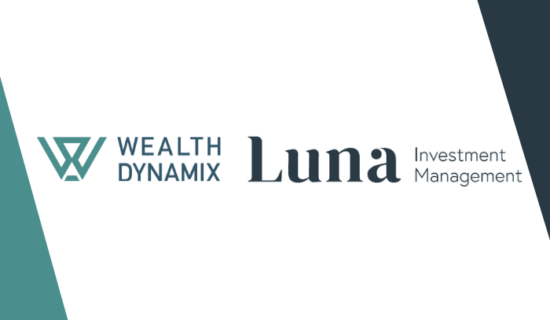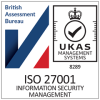What is a Client Lifecycle Management (CLM) software and why is it better than a Client Relationship Management (CRM) software in wealth management?
Do you find that a Client Relationship Management (CRM) software doesn’t deliver the more efficient front office and improved client experience you need? Find out how managing the client lifecycle (CLM) holistically can enable you to achieve your goals.
Standalone CRM systems, in comparison to CLM, tend to be less effective in supporting and visualising the entire end-to-end client journey; the onboarding stage of the process being the most common omission.
Additionally, whilst CRM solutions tend to just focus on front-office centric users and activities, CLM systems reflect the reality that the process and procedures across the client life cycle are often complex, and involve members of compliance, legal, or operations, collaborating in harmony.
I have a CRM – Why do I need a CLM?
On the face of it, it’s a simple question, and yet it is one to which there are an array of differing responses that paint somewhat of a confusing picture.
If there is any common thread, it’s perhaps the idea that a CLM is somehow a CRM but ‘better’. But what does that really mean?
CLM software spans the entire client lifecycle from prospecting, onboarding, managing, and servicing to re-engaging; developing and continuously improving the firm’s relationship with its customers to increase client retention and profitability.
Let’s start at the beginning – what is Client Relationship Management
Historically, a Client Relationship Management (CRM) tool has been viewed as little more than a glorified address book. It would be used predominately by sales and marketing to collect and manage data on existing customers and potential customers and log the interactions between the firm and those customers or potential customers. CRM systems, then, appear to be rather simplistic and straightforward.
Yet CRM systems have also evolved significantly over time. Most notably, this evolution has included an emphasis on workflow and automation. In other words, they have grown to be less static and to support ‘doing’ and the completion of processes. To support this completion of process there is a need to include customer servicing users in addition to sales and marketing.
The emphasis on workflow and the broadening of users to include customer servicing users in the middle and back office is critical to understanding what makes a Client Lifecycle Management (CLM) distinct. If CRM already includes these capabilities, they can surely not be the distinguishing factors for a CLM. So, what is it, then?
As mentioned, CRM systems – both the earliest versions and the latest – place a heavy emphasis on prospects and customers. They pay little attention to how a prospect transitions from being a prospect to being a customer. In wealth management this transition is crucial.
Why does this matter for wealth management firms?
The journey with wealth management clients is different from signing up to a bank account. There are things we know at the outset, and things that change subsequently. These tend to appear as the onboarding process progresses such as Risk & associated Reviews; FACTA/CRA documentation and preferred data provision channel.
Essentially, it is the transitional phases where the value lies – from prospect through onboarding to managing the client – the processes are complex especially during the client onboarding process, or re-boarding clients or for client reviews – and almost any other use case because the process to undertake the requests or changes requires a re-run of most of the Know Your Prospect (KYP) / Know Your Customer (KYC) processes – and not only for them, but in the case of UHNWI’s their entire ecosystem.
It is the complexity of this process – and indeed, the need for a full spectrum of roles to seamlessly collaborate across that process – that creates the need for a CLM system.
A CRM system does not pay due attention to the complexity and specificity of the transitioning process from prospect to customer. In other words, with a CRM, there is a gap in support for the customer lifecycle.
It is precisely because CLM solutions excel in supporting these high complexity, industry-specific (and often integration-heavy) workflows that they offer so much additional business value versus a conventional CRM solution.
Using Client Lifecycle Management to add value in wealth management
It is important to stress that it is precisely because CLM solutions excel in supporting high complexity, industry-specific, integration-heavy workflows that they offer so much business value versus a conventional CRM solution.
A wealth management & private banking dedicated CLM – such as Wealth Dynamix’s CLMi and WDX1 products – can reduce end-to-end onboarding times from the industry average of 14 days to same-day onboarding; that is a greater than 90% reduction in elapsed time, but, even more importantly, there is a 60% reduction in firm effort. Even more importantly, these same sorts of reductions in firm effort/staff hours can also be achieved against the periodic review process.
Why is that so significant? The answer is due to the sheer volume of cases. Whilst, for an established firm at least, the annual growth in the numbers of new clients – and therefore the number of new onboarding cases – may be quite modest, the number of review cases is anything but; suitability alone must be done at least annually (where applicable), and that’s before Anti Money Laundering (AML) reviews – the frequency of which will be risk-based – are considered. Very quickly, for an established wealth manager, average savings per annum get into some extremely significant numbers.
Why Client Lifecycle Management wins in the wealth management space
An Enhanced Customer Experience
Several factors combine to make the use of a CLM attractive – from the “collect once, use many times” approach to data which makes re-keying a thing of the past, to the use of digital channels to augment face-to-face meetings such as document-e-signature, real-time multi-channel collaboration tools. Clients can set their preferred channels of communication and conduct their account on their terms anytime, anywhere, all within a secure CLM environment. Not only does this help to save precious time and resources, but it also reduces client friction too.
Faster Time to Revenue and the Opportunity to Grow Revenue
Our platform can efficiently streamline the onboarding process into one that is seamless and frictionless. With the use of intelligent processes such as parallel processing and dynamic interfaces, we can reduce the time taken to onboard a client – from 30+ days in some cases to a single day – vastly improving the time to revenue.
Customer 360
The use of a client centric system that allows the Relationship Manager to see all the relevant information that relates to a client, as well as where they are in the lifecycle, is immensely useful in time saving during the day. The system can generate the next best action which allows RM’s to spot opportunities to help their clients as well as generate revenue.
Enhanced Regulatory Protection
Automated rule-based workflows can be applied to all aspects of engagement, onboarding and relationship management which adhere to internal best practice and regulatory requirements. These are fully auditable, supplying entirely defensible and demonstrable compliance, which mitigates risk to your firm and protects your clients.
Increased Operational Efficiency
Using big data and in-built rule-base logic, smart alerts and recommendations can be triggered to prompt all users to the next most effective actions to take. Not only can these be used to improve service delivery, but they can also find potential cross-selling opportunities.
Cross-department Collaboration
The process and procedures across the client life cycle are often complex and involve members of many teams (e.g. Compliance, Legal or Operations). CLM systems will be able to supply a single, seamless and fully digitised platform, allowing all these distinct roles to collaborate in harmony. In other words, CLM systems not only tend to be richer in capability compared to a CRM system but are also relevant to many more roles across the wealth management business.
Within the wealth management and private banking industry, a number of terms are often used interchangeably, and with each of these often meaning different things to different people.
CRM (Client Relationship Management) is the ability to manage client and prospective clients, and the communication and basic information.
CLM (Client Lifecycle Management) with wealth management and private banks is a much broader approach, covering a range of additional functionalities to cover the full lifecycle.
Steve Jobs at Apple brought together the mobile telephone and the music player into the iPhone. We see that CLM brings together process and data in the same way- in one place.
Hopefully, this article has gone some way to clearing up the confusion that seems to surround the distinction between CLM and CRM. There is a need to clarify this, since many organisations buy a CRM system believing it will solve their requirements, when in fact what they needed all along was a CLM system.
Are you seeking to create an extraordinary digital-first client prospecting, onboarding and servicing experience for your wealth management firm?
If you would like to learn about how we can assist, please don’t hesitate to get in touch.





